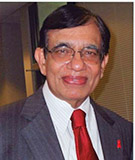
Promoting the health of Children - Part II

The Role of Physical Activity
Our bodies are meant to be busy — to move fast, walk or even run for miles and lift heavy things as well. The more the muscles are exercised, the larger the muscle cells become. And you can use well exercised muscles for a longer time. Without exercise, the muscles shrink and tire easily. And muscles make up about 40 percent a normal person’s weight.
Unfortunately, physical activity among children and teens is lower than previously thought. This portends ill health during later life. According to a recent study from Johns Hopkins that analyzed 12,500 young people, “Activity at the end of adolescence was alarmingly low and by age 19, they were comparable to 60-year olds!” A serious situation that warrants immediate action.
The main concern is that these exercise deficits are contributing to the growing obesity epidemic, particularly among children and teens. More than a quarter of our school-going children do not get meaningful exercise. Many school curriculums do not have a committed hour of physical activity. In the morning, they are being driven to the school when they spend their time in the back seat playing on their tablets or iPhones and in the evening they have home work to do and their favorite TV programs to watch. In big cities, most children live in apartments and hence don’t have enough space to run around.
According to the World Health Organization, “Children and teens are recommended to get at least an hour of moderate-to-vigorous physical activity every day.” And yet, the Hopkins study shows, “Over 25 percent of boys and 50 percent of girls between 6-11 and over 50 percent of male and 75 percent of female teens between 12-19 didn’t meet this recommendation.” All these take a toll on their health. That is the reason Lenore Skenazy wrote in a recent Wall Street Journal, “American kids reach their Geritol years before they’re old enough to drink!”
Now, that’s a profound statement. Why? To begin with, “one of the drivers of the diabetes epidemic that we see today is a lack of physical activity, which makes this news all the more harrowing as pre-diabetes and type 2 diabetes are increasing in younger individuals.” So, it’s time to pay attention to the activity levels of our children. Remember, the habits learned during childhood will stay with you as you grow into an adult. So, it’s even more important that we guide our children to be physically active.
The big question is how to modify the daily schedules of the children to fit into some physical activity. And how do we motivate them to do what we want? To begin with, the adults in the family can set an example by taking the kids with them when they go for walking, playing tennis and such sports and encouraging them to participate. If the kids see their parents working out, they will follow suit. Any activity is good for children, whether it’s running around in the yard or in a playground doing jump rope, hopscotch, kickball, Frisbee or dancing, climbing up and down the stairs in the house, etc. Along with that, do cut down their TV time a little; too much TV is not good for their eyes anyway.
The parents do not want to enforce all of these like a rigid discipline. “Just let them get out and play,” suggests Marty Lillystone, exercise physiologist in Beaumont Hospital, Royal Oak, Mich. “I like to promote the idea, especially for children, to think of these activities as play rather than exercise. Parents should create an atmosphere that supports an active lifestyle. It doesn’t mean they have to take them somewhere for organized activities.”
Looks like parents and teachers are beginning to take note. During a recent visit to Detroit, I saw our daughter taking her two children, 4 and 2, to a local ‘bounce house’ for a birthday party. “Oh, this is a popular venue for birth day celebrations of the children,” she said. They had inflatable trampolines, moon bounces, jumpers, tunnels and more and I could see the kids having a good time, simultaneously getting a lot of exercise. After two hours, they were exhausted and ready for their pizza lunch and a slice of the birthday cake. I also went with the kids to their pre-kindergarten school one day and saw them spending most of their time outdoors, playing in the sand box, planting a garden, plucking flowers and running around.
Well, you get the idea, right? Too much sitting is not good for the kids’ mental or physical development. As parents and teachers, we need to encourage them to be more active and develop good healthy patterns in their lives.
To conclude in the next issue …
M.P. Ravindra Nathan, M.D., is a cardiologist and Emeritus Editor of AAPI Journal. His book “Stories from My Heart” was recently released. (www.amazon.com or www.bn.com).